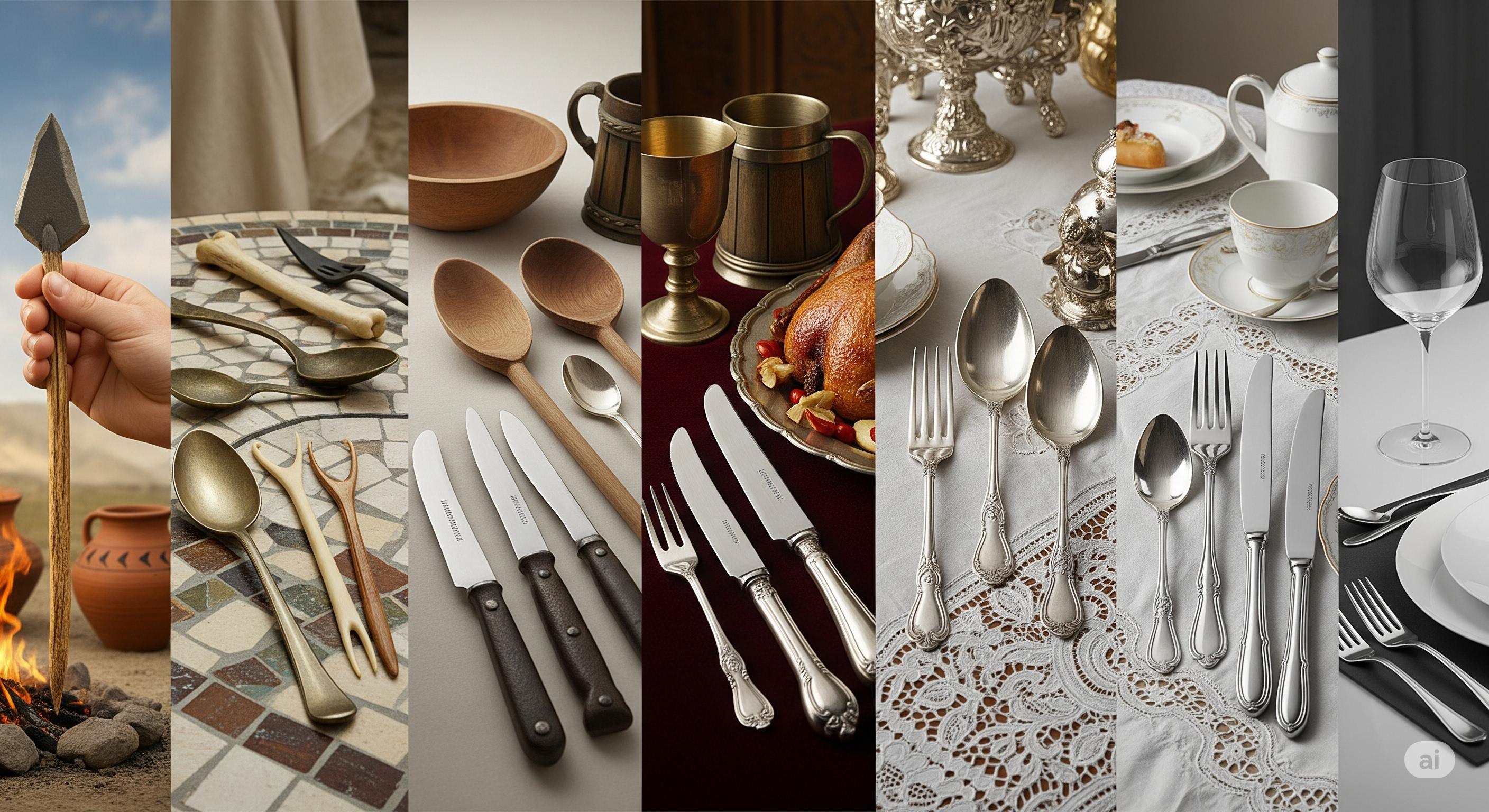Prehistoric Tools
Long before the dawn of civilization, early humans relied on the natural world to create their first kitchen tools. Stones were shaped into sharp blades for cutting meat and plants, while bones and shells served as scoops, scrapers, and even primitive spoons. These simple implements were essential for survival, helping our ancestors process food and cook over open fires. The development of these tools marked a turning point in human evolution, allowing for more efficient food preparation and the sharing of meals. The ingenuity of these early inventors laid the groundwork for the complex utensils we use today, proving that necessity truly is the mother of invention.
Ancient Civilizations
As societies like Egypt, Greece, and Rome flourished, so did their culinary tools. Pottery became widespread, enabling the storage and cooking of food in ways never before possible. Bronze and iron utensils emerged, offering durability and versatility. The fork, spoon, and knife began to take on recognizable forms, and communal eating became a cornerstone of social life. These civilizations also introduced specialized tools for baking, brewing, and preserving food. The artistry and craftsmanship of ancient utensils reflected both function and status, with ornate designs for the wealthy and practical versions for everyday use. Their innovations continue to influence modern kitchens around the world.
Medieval to Renaissance
The Middle Ages and Renaissance periods saw a surge in utensil specialization. Wealthy households boasted pewter and silverware, often engraved with family crests, while the masses relied on sturdy wooden and iron tools. The rise of banquets and elaborate feasts led to the creation of serving forks, ladles, and carving knives. Culinary guilds and trade routes introduced new materials and techniques, further diversifying the range of available utensils. This era also witnessed the birth of etiquette and table manners, as dining became a more refined and communal experience. The legacy of these innovations is still evident in the cutlery and serving pieces we use today.
Modern Era
With the advent of industrialization, kitchen utensils underwent a dramatic transformation. Mass production made stainless steel, aluminum, and plastic tools affordable and accessible to all. Innovations like the can opener, potato peeler, and non-stick spatula revolutionized home cooking, making it faster, safer, and more enjoyable. Today’s utensils are designed with convenience, safety, and style in mind, reflecting centuries of innovation and adaptation. Ergonomic handles, heat-resistant materials, and multifunctional designs cater to the needs of modern cooks. As we embrace new technologies and sustainable practices, the evolution of kitchen tools continues, ensuring that every meal is a celebration of progress and creativity.
← Back to Blogs